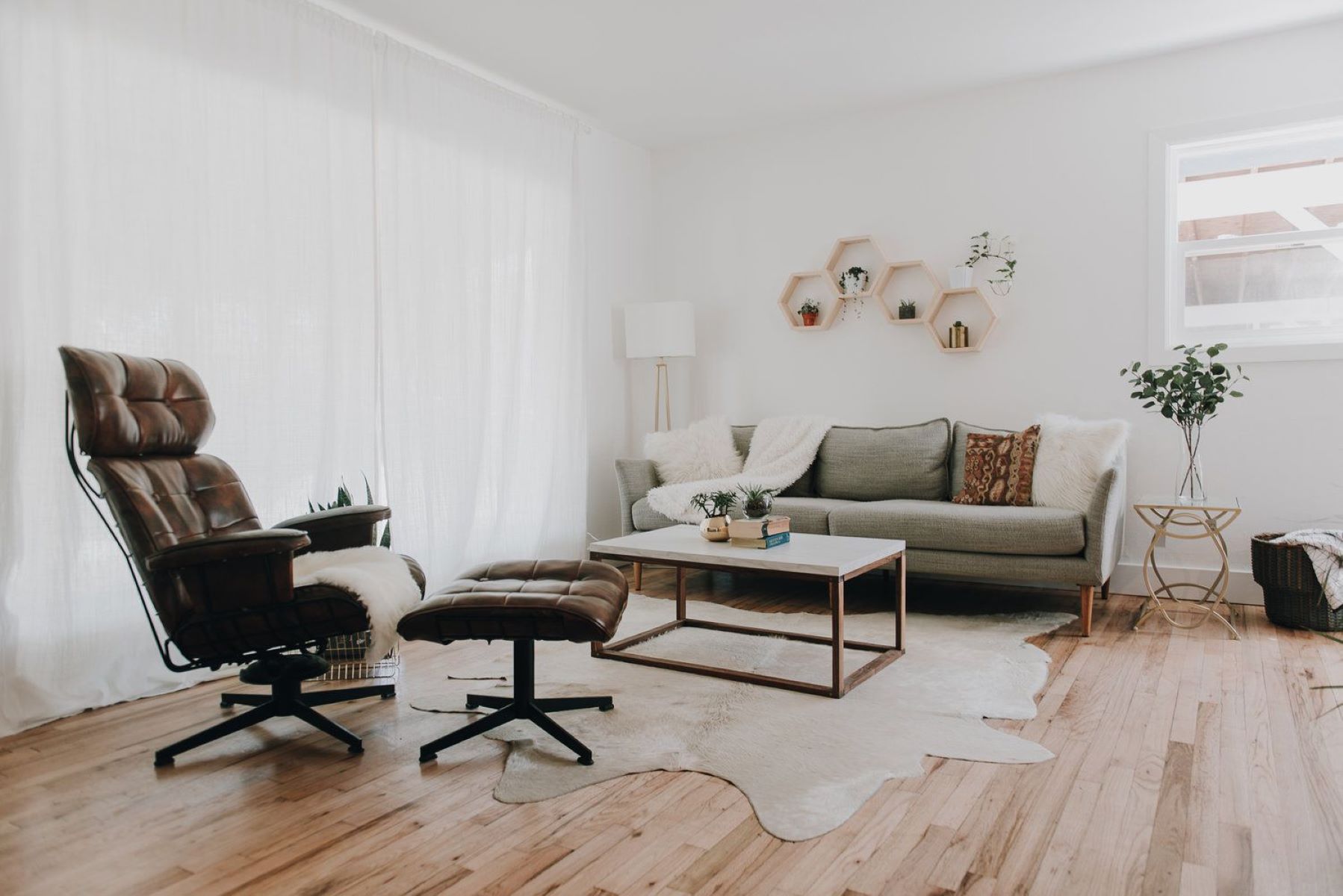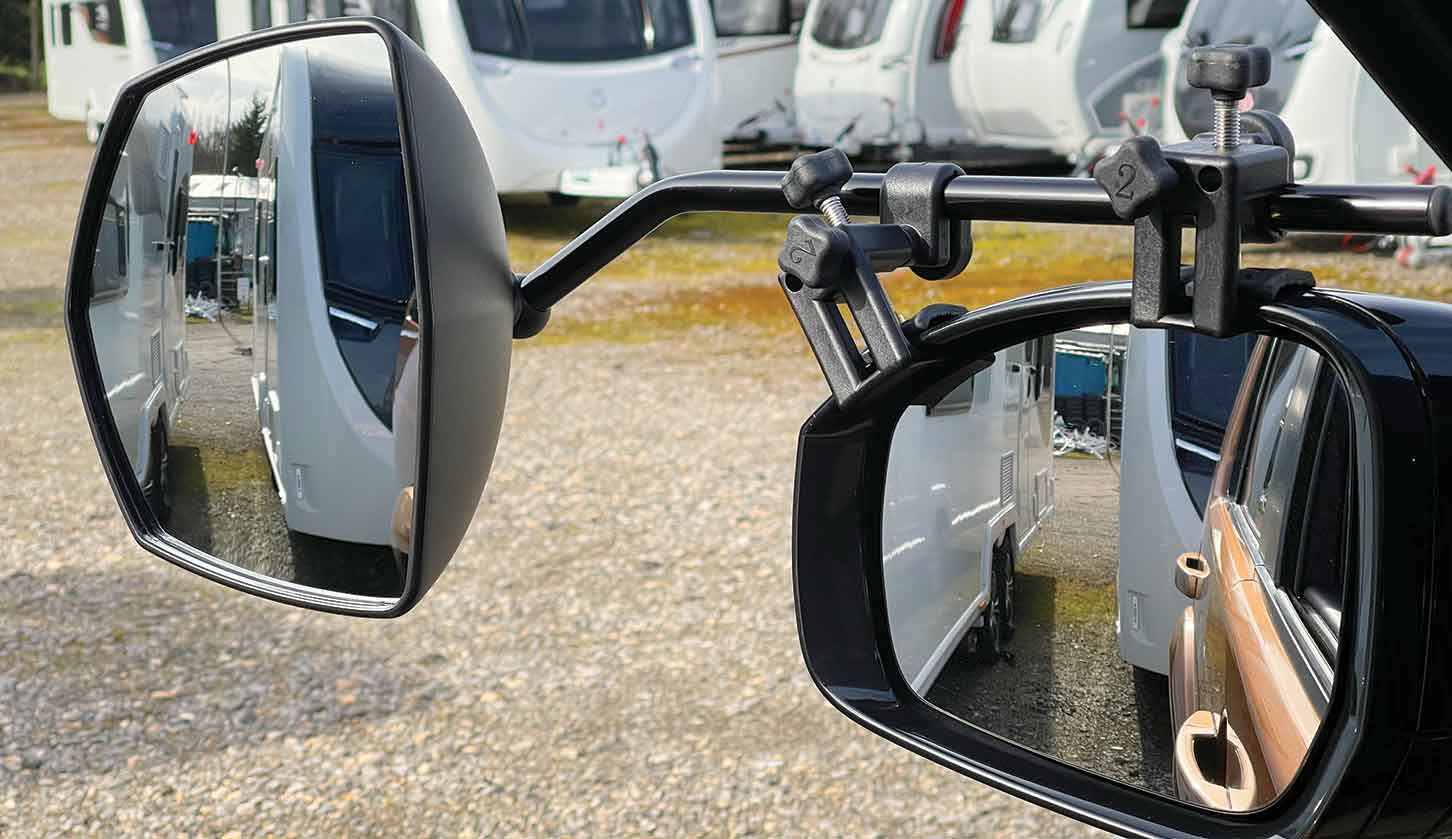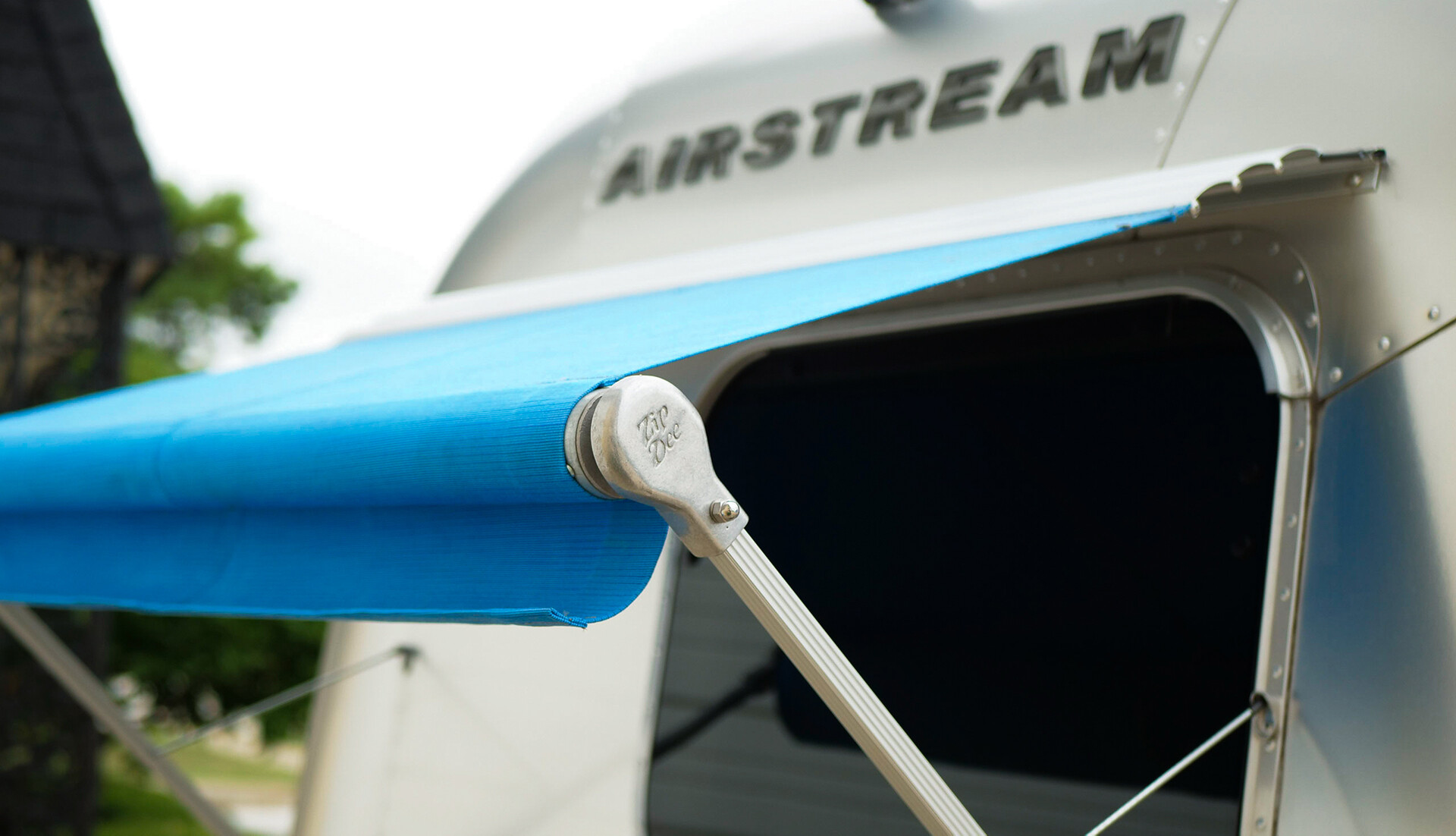Home>Furniture & Design>Living Room Furniture>How To Adjust A Recliner


Living Room Furniture
How To Adjust A Recliner
Published: February 12, 2024
Learn how to adjust a recliner for optimal comfort and relaxation in your living room. Find tips and techniques for maintaining your living room furniture and design.
(Many of the links in this article redirect to a specific reviewed product. Your purchase of these products through affiliate links helps to generate commission for Storables.com, at no extra cost. Learn more)
Introduction
Adjusting a recliner is a simple yet essential task that can significantly enhance your comfort and relaxation experience. Whether you're settling into your favorite spot for a movie night or seeking the perfect position for a well-deserved nap, knowing how to adjust your recliner properly can make all the difference. By understanding the mechanisms and techniques involved, you can customize your recliner to suit your specific preferences, ensuring optimal support and comfort.
In this comprehensive guide, we will walk you through the step-by-step process of adjusting a recliner to achieve the perfect position for your individual comfort needs. From identifying the adjustment mechanism to making precise modifications, you'll gain the knowledge and confidence to optimize your recliner's functionality. With the right tools and a clear understanding of the process, you can effortlessly tailor your recliner to provide the ideal level of support and relaxation.
Whether you're a seasoned recliner enthusiast or a newcomer to the world of adjustable seating, this guide will equip you with the essential skills to make the most of your recliner. By following the instructions outlined in the subsequent sections, you'll be able to fine-tune your recliner to meet your specific comfort requirements, ensuring that every lounging session is a truly enjoyable experience.
So, let's dive into the details and learn how to adjust a recliner effectively, empowering you to create a personalized seating experience that perfectly complements your relaxation routine.
Key Takeaways:
- Master the art of adjusting your recliner to create a personalized seating experience tailored to your unique comfort preferences. Familiarize yourself with the adjustment mechanism and use it effectively to find the perfect balance of support and relaxation.
- Thoroughly test and make further adjustments to your recliner to address specific comfort concerns and refine the seating configuration. By focusing on tension, lumbar support, footrest positioning, and overall stability, you can optimize the functionality for a truly enjoyable and supportive lounging environment.
Read more: How To Adjust A Lazy Boy Recliner
Tools and Materials Needed
Before embarking on the process of adjusting your recliner, it's essential to gather the necessary tools and materials to ensure a smooth and efficient experience. Here's what you'll need:
-
Owner's Manual: The owner's manual for your recliner is a valuable resource that provides specific guidance on the adjustment mechanisms and recommended techniques. If you have misplaced the manual, you may be able to find a digital version on the manufacturer's website.
-
Adjustment Lever or Button: Depending on the type of recliner, you may need to utilize an adjustment lever or button to modify the position of the seat and backrest. Familiarize yourself with the location and operation of these components before proceeding.
-
Allen Wrench or Screwdriver: Some recliners feature adjustable tension settings that require an Allen wrench or screwdriver for precise adjustments. Having these tools on hand will enable you to fine-tune the recliner's tension to your liking.
-
Clean Cloth: It's always a good idea to have a clean cloth or microfiber towel available to wipe down any components that may accumulate dust or debris during the adjustment process.
-
Optional Lubricant: If your recliner's mechanisms are feeling stiff or resistant, a small amount of lubricant, such as silicone spray or furniture oil, can help to restore smooth operation. Be sure to consult the owner's manual to determine the appropriate type of lubricant for your specific recliner model.
By ensuring that you have these tools and materials readily available, you'll be well-prepared to proceed with the adjustment process. Having a clear understanding of the components and being equipped with the necessary items will contribute to a successful recliner adjustment, allowing you to tailor the seating experience to your exact preferences.
Step 1: Locate the Adjustment Mechanism
Before making any adjustments to your recliner, it's crucial to familiarize yourself with the location and operation of the adjustment mechanism. The specific design of your recliner will determine the type of adjustment mechanism it features, and understanding how to access and manipulate this mechanism is the first step towards achieving the desired seating position.
In most recliners, the adjustment mechanism is located on the side of the chair, typically near the base or within arm's reach. The mechanism may consist of an adjustment lever, a button, or a series of tension knobs, depending on the recliner's design and functionality. If you have the owner's manual for your recliner, it can provide valuable insights into the precise location and operation of the adjustment mechanism.
Take a moment to visually inspect your recliner and identify any visible components that may be associated with the adjustment mechanism. Look for any levers, buttons, or knobs that stand out from the rest of the chair's structure. Additionally, check for any markings or labels that indicate the presence of an adjustment feature.
If your recliner includes an electronic or power-operated adjustment system, the controls may be located on a remote or integrated into the chair's armrest. Familiarize yourself with the layout and functionality of these controls to ensure that you can easily access and operate the adjustment mechanism.
By locating the adjustment mechanism and understanding its basic functionality, you'll be well-prepared to proceed with the adjustment process. This initial step sets the stage for making precise modifications to your recliner, allowing you to customize the seating experience to your exact preferences. With a clear understanding of where the adjustment mechanism is situated and how it can be manipulated, you're ready to move on to the next steps of the adjustment process.
Step 2: Use the Adjustment Lever or Button
Once you have located the adjustment mechanism on your recliner, whether it's an adjustment lever, button, or a series of tension knobs, it's time to put it into action. The specific type of mechanism will dictate the method by which you can modify the recliner's position to achieve your desired level of comfort and support.
Adjustment Lever:
If your recliner is equipped with an adjustment lever, it typically functions by allowing you to manually control the positioning of the seat and backrest. To use the adjustment lever effectively, follow these steps:
-
Positioning: Begin by sitting in the recliner and ensuring that your body weight is evenly distributed. This will provide stability and prevent any sudden movements as you engage the adjustment lever.
-
Gentle Activation: Locate the adjustment lever, which is often situated on the side of the recliner. Depending on the design, the lever may need to be lifted, pulled, or pushed to initiate the adjustment process.
-
Smooth Adjustment: With a firm yet gentle grip on the lever, begin to move it in the desired direction to modify the recliner's position. Whether you're reclining the backrest, extending the footrest, or transitioning to an upright position, apply steady pressure to achieve a smooth and controlled adjustment.
-
Test and Refine: As you make adjustments using the lever, pay attention to how the recliner responds to your movements. Test different positions and angles to determine the optimal configuration for your comfort needs.
Read more: How To Raise A Recliner
Adjustment Button:
For recliners featuring an adjustment button, the process may involve electronic or power-operated controls that enable seamless modification of the seating position. Here's how to use the adjustment button effectively:
-
Activation: Locate the adjustment button, which may be integrated into the armrest or positioned within easy reach. Depending on the design, the button may need to be pressed or held to initiate the adjustment process.
-
Responsive Control: Press the adjustment button in the direction that corresponds to your desired recliner position. Whether you're seeking to recline the backrest, extend the footrest, or return to an upright stance, the button's responsive control will facilitate smooth and precise adjustments.
-
Customized Positioning: Experiment with different combinations of button presses to fine-tune the recliner's position. Take note of how the chair responds to each adjustment, allowing you to create a customized seating configuration that perfectly suits your comfort preferences.
By understanding how to effectively use the adjustment lever or button, you can confidently navigate the process of modifying your recliner's position to achieve optimal comfort and support. Whether you prefer the tactile control of a manual lever or the convenience of electronic adjustments, mastering the operation of the adjustment mechanism is essential for creating a personalized seating experience.
Step 3: Test the Recliner
After making adjustments to your recliner using the designated lever, button, or knobs, it's crucial to thoroughly test the modified seating positions to ensure that they align with your comfort preferences. Testing the recliner allows you to assess the impact of the adjustments and make any additional modifications if necessary, ultimately refining the seating experience to perfectly suit your needs.
Begin by transitioning the recliner into various positions, such as full recline, partial recline, and upright seating, to gauge the level of support and comfort offered in each configuration. Pay close attention to how your body feels in each position, noting any areas of discomfort or strain that may indicate the need for further adjustments.
As you test the recliner, consider the alignment of your spine, the distribution of body weight, and the positioning of your legs and feet. A well-adjusted recliner should provide adequate lumbar support, promote healthy posture, and minimize pressure points, contributing to a truly relaxing and supportive seating experience.
In addition to assessing the physical comfort of the recliner's positions, take note of any unusual sounds, resistance, or instability that may arise during the testing process. These observations can provide valuable insights into the functionality of the adjustment mechanisms and help identify any potential issues that require attention.
Furthermore, engage in typical activities that you would perform while seated in the recliner, such as reading, watching television, or simply relaxing. By simulating real-life usage scenarios, you can evaluate how well the adjusted recliner accommodates your preferred activities and contributes to your overall comfort and enjoyment.
Throughout the testing phase, be mindful of the subtle nuances in the recliner's performance and how they align with your comfort expectations. By taking a comprehensive approach to testing the recliner, you can gain a thorough understanding of its capabilities and make informed decisions regarding any additional adjustments that may be needed.
By thoroughly testing the recliner after making adjustments, you can fine-tune the seating experience to perfection, ensuring that every moment spent in your recliner is characterized by unparalleled comfort and support. This hands-on evaluation process empowers you to make precise modifications that cater to your unique comfort preferences, ultimately enhancing the overall enjoyment derived from your recliner.
Step 4: Make Further Adjustments if Necessary
After conducting thorough testing of the recliner and evaluating its performance in various positions, you may find that certain aspects of the seating experience require further refinement. Making additional adjustments to the recliner allows you to address any remaining comfort concerns and fine-tune the seating configuration to align with your specific preferences.
When considering further adjustments, it's essential to take a systematic approach, focusing on specific elements of the recliner's positioning and functionality. Here are the key considerations to keep in mind as you proceed with making additional modifications:
1. Tension and Resistance:
If you notice that the recliner's mechanisms exhibit excessive tension or resistance during position changes, it may be necessary to adjust the tension settings. For recliners equipped with tension knobs or screws, use an appropriate tool, such as an Allen wrench or screwdriver, to make precise adjustments to the tension levels. By carefully calibrating the tension, you can ensure that the recliner moves smoothly and effortlessly between different positions, enhancing the overall user experience.
Read more: How To Reupholster A Recliner
2. Lumbar Support and Comfort:
Pay close attention to the level of lumbar support provided by the recliner in each adjusted position. If you experience discomfort or inadequate support in the lower back region, consider making targeted modifications to the backrest angle or lumbar support mechanism, if applicable. By optimizing the lumbar support, you can promote healthy spinal alignment and alleviate potential discomfort associated with prolonged sitting.
3. Footrest and Leg Positioning:
For recliners featuring extendable footrests, focus on achieving an optimal leg and foot positioning that promotes circulation and relaxation. Adjust the footrest angle and extension to accommodate your leg length and preferred seating posture. Additionally, ensure that the footrest provides adequate support to prevent strain or discomfort in the lower body, contributing to a more comfortable and ergonomic seating experience.
4. Stability and Balance:
Evaluate the recliner's stability and balance in each adjusted position, paying attention to any instances of wobbling or uneven weight distribution. If you observe instability, consider adjusting the recliner's base or support structure to enhance stability and ensure a secure seating environment. By addressing stability concerns, you can create a safer and more reassuring seating experience.
By addressing these specific aspects of the recliner's performance, you can systematically refine the seating configuration to align with your comfort preferences. Making further adjustments, if necessary, empowers you to optimize the recliner's functionality and create a truly personalized seating experience that caters to your individual comfort needs.
This comprehensive approach to fine-tuning the recliner ensures that every aspect of the seating experience is carefully considered and adjusted to perfection, resulting in a truly enjoyable and supportive lounging environment. With a keen focus on refinement and customization, you can elevate the comfort and functionality of your recliner to new heights, enhancing the overall quality of your relaxation routine.
Conclusion
In conclusion, mastering the art of adjusting a recliner is a valuable skill that empowers individuals to create a personalized seating experience tailored to their unique comfort preferences. By following the step-by-step process outlined in this guide, you can confidently navigate the adjustment mechanisms of your recliner, ensuring that every lounging session is characterized by optimal support, relaxation, and enjoyment.
The journey of adjusting a recliner begins with the essential step of locating the adjustment mechanism, whether it's an intuitive lever, button, or a series of tension knobs. By familiarizing yourself with the operation and location of these components, you lay the foundation for making precise modifications that cater to your comfort needs.
Using the adjustment lever or button effectively is a pivotal aspect of the adjustment process, allowing you to seamlessly transition the recliner into various positions to find the perfect balance of support and relaxation. Whether you prefer the tactile control of a manual lever or the convenience of electronic adjustments, mastering the operation of the adjustment mechanism is essential for creating a personalized seating experience.
Thoroughly testing the recliner after making adjustments is a crucial step that enables you to assess the impact of the modifications and make any necessary refinements. By evaluating the recliner's performance in different positions and usage scenarios, you gain valuable insights into its capabilities and can fine-tune the seating experience to perfection.
Making further adjustments, if necessary, allows you to address specific comfort concerns and refine the seating configuration to align with your individual preferences. By focusing on tension, lumbar support, footrest positioning, and overall stability, you can systematically optimize the recliner's functionality, creating a truly enjoyable and supportive lounging environment.
In essence, the process of adjusting a recliner is a journey of customization and refinement, driven by the desire to create a seating experience that perfectly complements your relaxation routine. By leveraging the knowledge and techniques presented in this guide, you can elevate the comfort and functionality of your recliner, ensuring that it becomes a cherished oasis of relaxation within your living space.
With a clear understanding of the adjustment process and the tools at your disposal, you are well-equipped to embark on the journey of adjusting your recliner with confidence and precision. By embracing the art of recliner adjustment, you can unlock the full potential of your seating furniture, transforming it into a personalized haven of comfort and relaxation.
Frequently Asked Questions about How To Adjust A Recliner
Was this page helpful?
At Storables.com, we guarantee accurate and reliable information. Our content, validated by Expert Board Contributors, is crafted following stringent Editorial Policies. We're committed to providing you with well-researched, expert-backed insights for all your informational needs.














0 thoughts on “How To Adjust A Recliner”